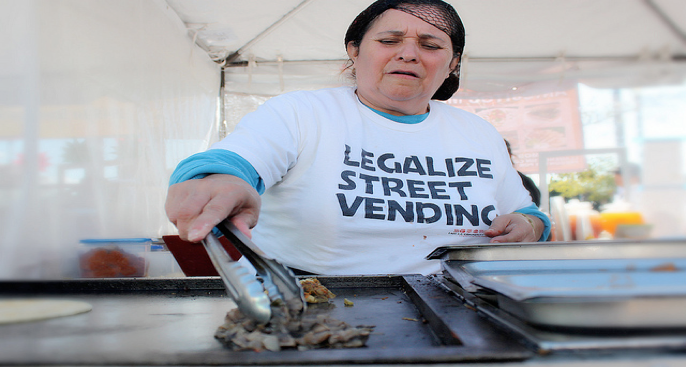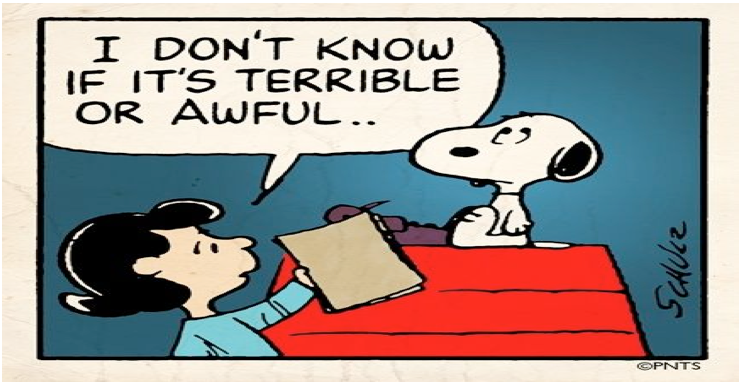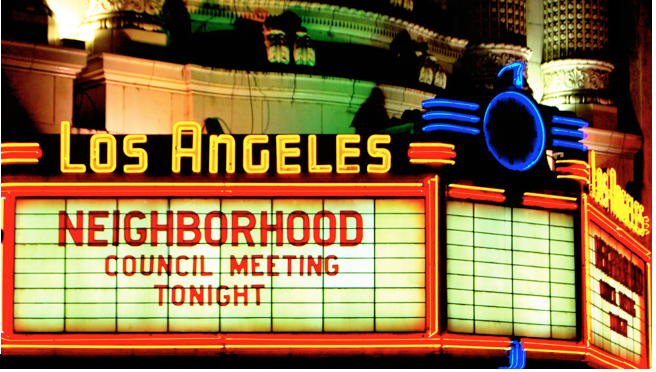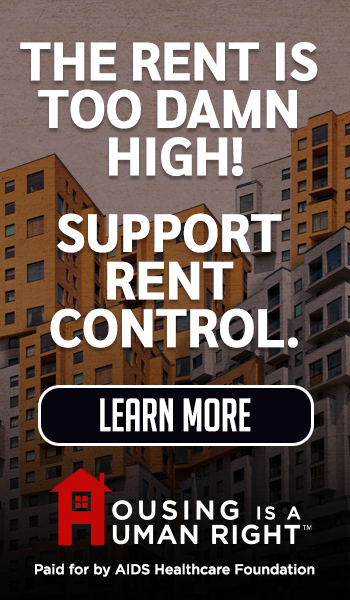Neighborhood Council Hosts Mayoral Election Forum … Mayor is a No-Show
NEIGHBORHOODS LA--Mayor Eric Garcetti, who is running for re-election against 10 challengers, skipped a pair of candidate forums held Wednesday night in Northridge and the Hollywood Hills … hosted by the Northridge East and the Hollywood Hills West Neighborhood Councils.
The mayor’s absence at the events was not surprising. Many believe Garcetti will easily win re-election in a contest in which he faces challengers who are at times colorful, thoughtful and spirited, but who are nevertheless doing poorly in the polls and mostly lacking in governing and political experience.
Some challengers took advantage of Garcetti’s absence Wednesday night, accusing him of being more preoccupied with running for higher office, letting the crime rate go up under his watch and spending more time at ribbon-cuttings than putting in the necessary hours to fix the city’s homelessness crisis.
David Saltsburg, a gadfly better known as Zuma Dogg, delivered some of the night’s harshest salvos, including this one:
“Everybody says Eric Garcetti is such a nice guy — no, he’s not!” Saltsburg informed an audience of a couple dozen people gathered at the Northridge Women’s Club on Lassen Street, where the Northridge East Neighborhood Council was hosting its forum.
“He’s a psychopath, politically, who has higher aspirations to be president,” Saltsburg continued, adding that Garcetti “doesn’t care about the side effects to this city at all.”
Garcetti, it turns out, did take a campaign-funded trip to Sacramento earlier in the day in which he managed to fit in a fundraiser and meetings with Gov. Jerry Brown, Assembly Speaker Anthony Rendon and state Sen. Jim Beall.
According to his campaign spokesman Yusef Robb, that trip was not what kept Garcetti from taking part in the Northridge forum and an event right before at the American Legion Hall that was put on by the Hollywood Hills West Neighborhood Council.
Anastasia Mann, president of the Hollywood Hills West Neighborhood Council, said many attendees at their event were upset that Garcetti’s representative, who had been scheduled to come in the mayor’s stead, canceled. The reason given was that Garcetti’s campaign decided they did not need to be part of an event “with candidates who didn’t have at least 15 percent in the polls,” Mann said, adding that the decision was “very disappointing.”
Robb did not disclose what Garcetti was doing Wednesday night, saying only that the mayor was “unavailable.”
With Garcetti not in the picture, the eight challengers who took part in the Northridge forum were given the spotlight when sharing their ideas.
Homelessness was the big issue at the Northridge forum, with two people in the audience querying the candidates on it. The responses ranged from concrete ideas to more vague concepts about changing society’s attitudes toward homeless individuals.
Mitchell Schwartz, one of the better funded and more politically experienced of the candidates, said he wants to help homeless veterans and will work to increase the number of affordable housing units in Los Angeles.
Diane “Pinky” Harman, an actress and former teacher, said that she feels more needs to be done to understand the different reasons people become homeless, before prescribing solutions.
Dennis Richter, a member of the Socialist Workers Party, said that he wants to “launch a public works program” that will provide jobs to anyone who wants one, including the homeless.
Saltsburg said there needs to be an “all hands on deck approach,” that includes converting storage space into residences for the homeless. He also criticized Proposition HHH, saying the homeless housing bond measure passed by voters in November will be a “drip in the bucket” that will likely be mired in delays and increasing costs.
Paul E. Amori, who says his campaign is about making “love” a “core value when deciding policies,” says he wants more people to “come together” to help the homeless and to acknowledge “certain people just simply need our love.”
Eric Preven, a City Council critic and board member of the Studio City Neighborhood Council, said homeless service facilities should resemble the communal atmosphere of a “kibbutz.”
“We don’t need a hammer on a guy if he falls off the wagon and starts drinking again,” he said. “It’s a part of life, and other cultures and societies do a better job of taking care of their population.”
The conversation moved on to crime after one audience member asked the candidates what they would do about a local strip club where several people were killed.
None of the candidates seemed aware of the circumstances at that club, but Preven said the city has some land use tools to put pressure on the strip-club business, while Saltsburg said the issue should be referred to the city attorney.
Others like Schwartz and David Hernandez took a wider angle, saying the city is “underpoliced” and needs more officers.
Richter diverged from the others in answering that “more police is not going to help.”
Those involved in criminal activity need jobs, which will keep them out of trouble, he said.
There did not seem to be a clear winner at the Northridge forum, with one 70-year-old Northridge resident, who declined to give her name, saying that the only thing she is certain about is that she will not be voting for Garcetti.
She said she did not vote for him last time because she felt he was not qualified. This time, “he really has abandoned us, the fact that he isn’t even campaigning,” she said.
And by the end of the night, the long-shot idea of Garcetti losing his re-election bid no longer seemed so unreasonable for some.
Glen Wilson, the treasurer of a nearby neighborhood council, said he is leaning toward Hernandez.
Anything could happen, he added, noting that Donald Trump, who many had discounted, won the presidential election because voters “wanted change.”
The night’s moderator, Nick Beer, who is a board member of the Northridge East Neighborhood Council, was also open to the idea of an unexpected outcome.
Beer kept his own pick a secret while saying that based on media coverage, Garcetti “is probably going to get re-elected.”
“But I also know elections can be very surprising,” he added. “I was personally quite surprised at the outcome of the presidential election, so I know that sometimes, there are ... things that you just don’t see coming.”
(Elizabeth Chou writes for the Los Angeles Daily News … where this report was first posted.) Photo credit: Gene Blevin
-cw

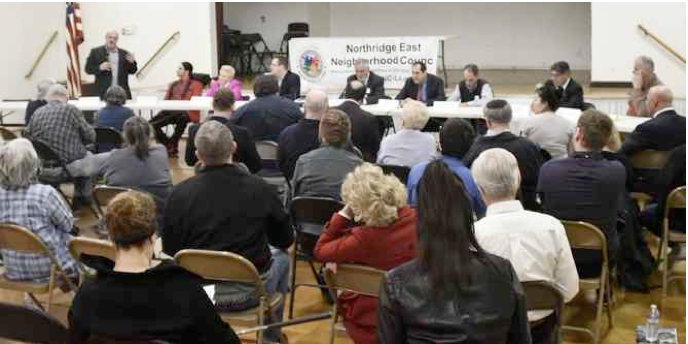
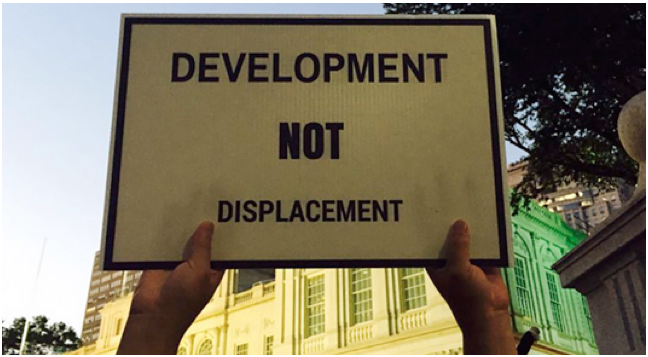
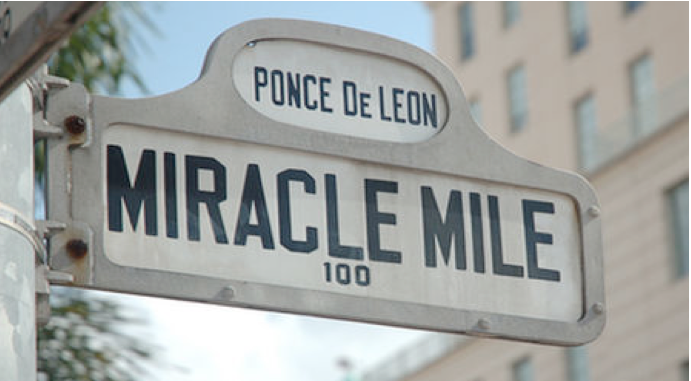
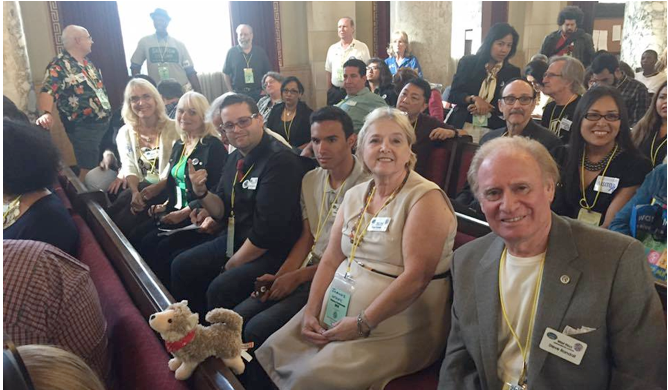
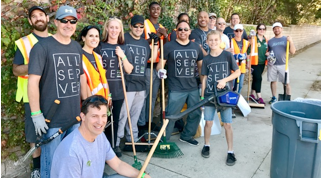 Today I am proud to work with a board of workaholics that is second to none in the city. Our agendas are (almost) always posted on time and our committee meetings are filled with enthusiastic and passionate members and stakeholders. Meeting a quorum is never a problem.
Today I am proud to work with a board of workaholics that is second to none in the city. Our agendas are (almost) always posted on time and our committee meetings are filled with enthusiastic and passionate members and stakeholders. Meeting a quorum is never a problem. 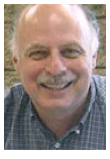 We still get the cold shoulder from the L.A. Times and our junk mail is still addressed incorrectly, but fortunately we have the Los Angeles Daily News, which does a fantastic job of covering our community. And, as I have pointed out before, we are rapidly earning the respect of other communities, as well as the city’s political and managerial elites.
We still get the cold shoulder from the L.A. Times and our junk mail is still addressed incorrectly, but fortunately we have the Los Angeles Daily News, which does a fantastic job of covering our community. And, as I have pointed out before, we are rapidly earning the respect of other communities, as well as the city’s political and managerial elites. 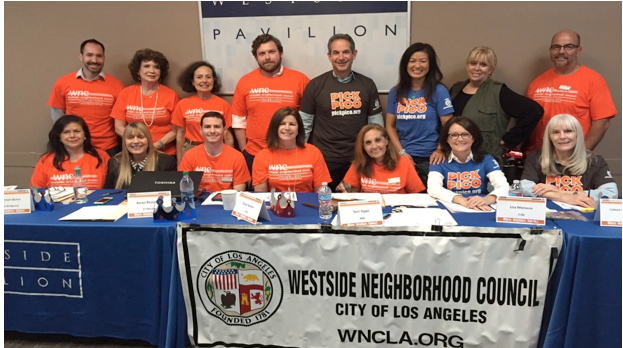
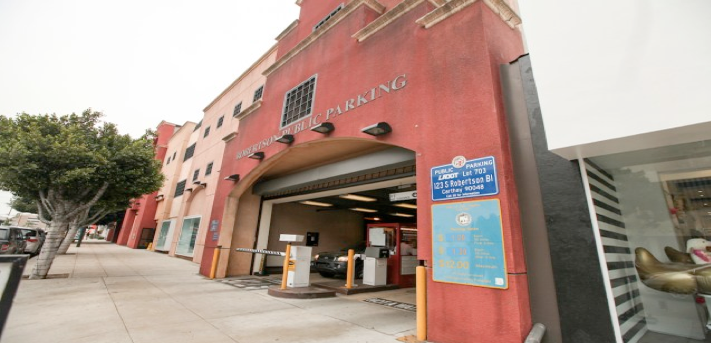
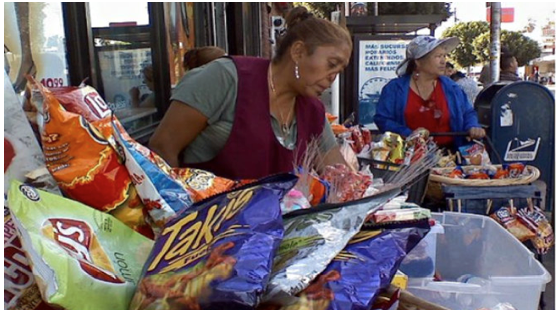
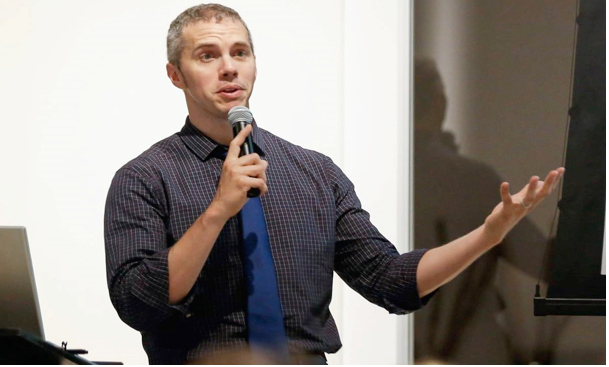
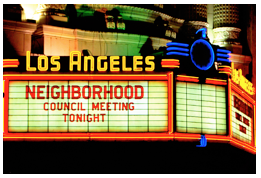 While neighborhood councils were created 15 years ago to better connect residents with their city government, oftentimes it can feel like they just stand in the way of progress. That said, I have since come to recognize the opportunities that these groups represent, and the ways in which people who care about walkability, bikeability, and street safety in their communities can create change on a micro-scale, albeit an important one, through their neighborhood councils.
While neighborhood councils were created 15 years ago to better connect residents with their city government, oftentimes it can feel like they just stand in the way of progress. That said, I have since come to recognize the opportunities that these groups represent, and the ways in which people who care about walkability, bikeability, and street safety in their communities can create change on a micro-scale, albeit an important one, through their neighborhood councils.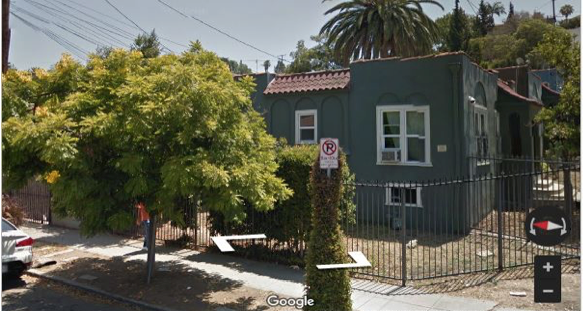
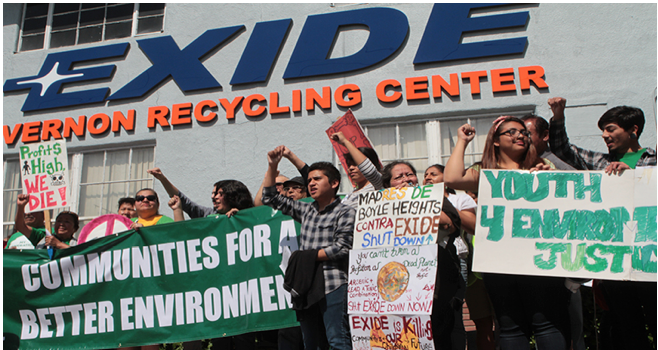
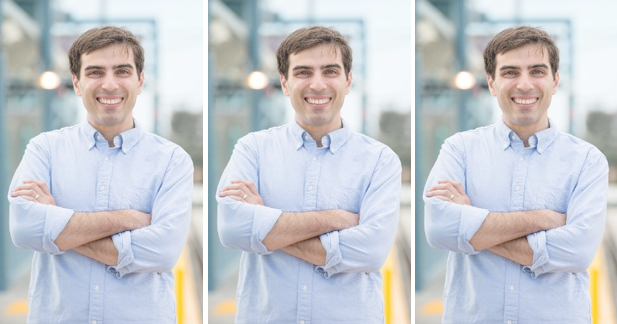
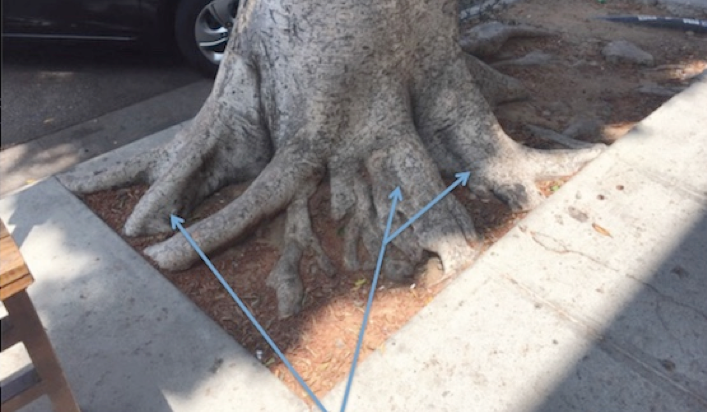
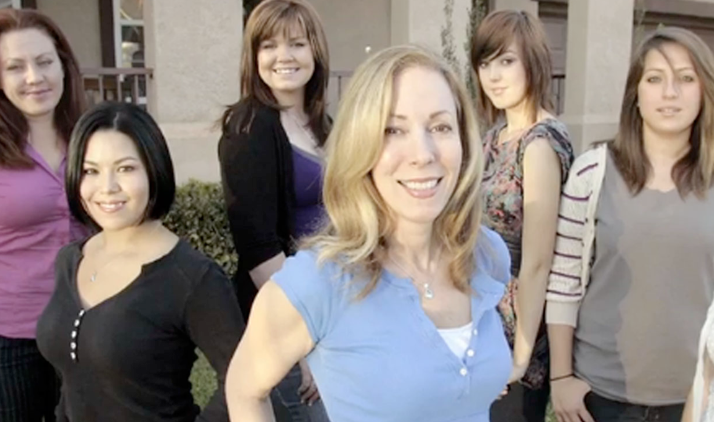
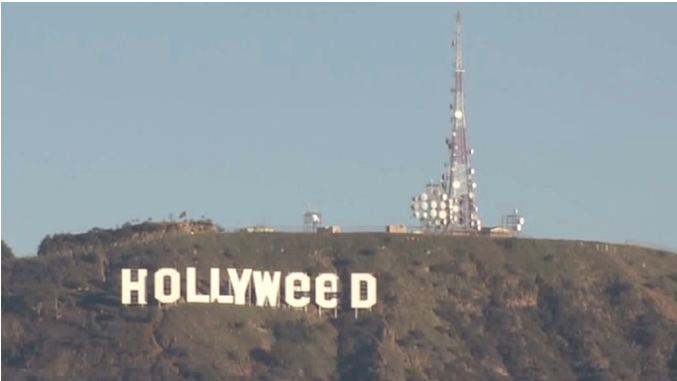

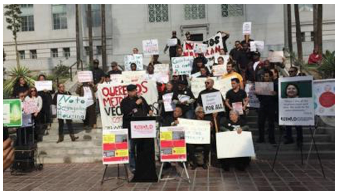 Opponents have speculated the city was swift in approving the project ahead of the implementation of a ballot measure
Opponents have speculated the city was swift in approving the project ahead of the implementation of a ballot measure 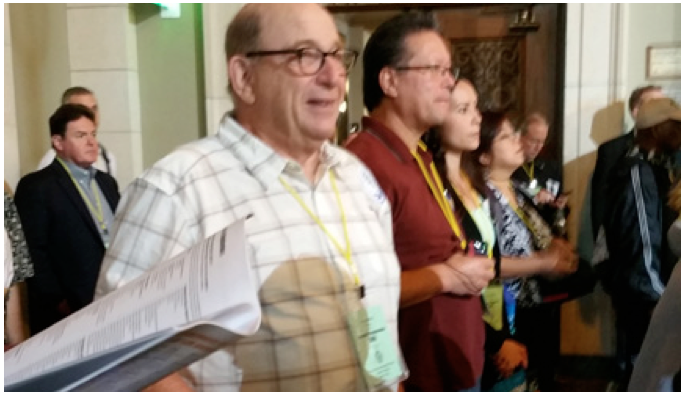
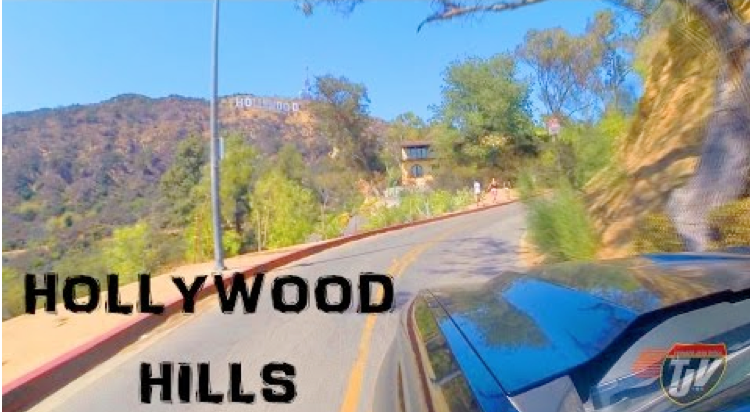
 We work closely with LAPD, LAFD and even DWP. We help to get streets repaired, city services improved, support schools, LAPD and Fire Department programs, our library, theatre arts projects.....and play a major role in planning and land use issues, particularly when it comes to density and major developments within our congested boundaries. We've had to battle controversies that include protecting Runyon Canyon from commercialization to controlling the out-of-control situation with the Mini Tour bus issues. We listen to developers as well as those opposed to them.
We work closely with LAPD, LAFD and even DWP. We help to get streets repaired, city services improved, support schools, LAPD and Fire Department programs, our library, theatre arts projects.....and play a major role in planning and land use issues, particularly when it comes to density and major developments within our congested boundaries. We've had to battle controversies that include protecting Runyon Canyon from commercialization to controlling the out-of-control situation with the Mini Tour bus issues. We listen to developers as well as those opposed to them. 
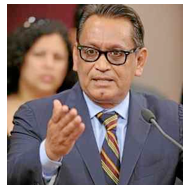 LA City Council Member Gilbert Cedillo
LA City Council Member Gilbert Cedillo